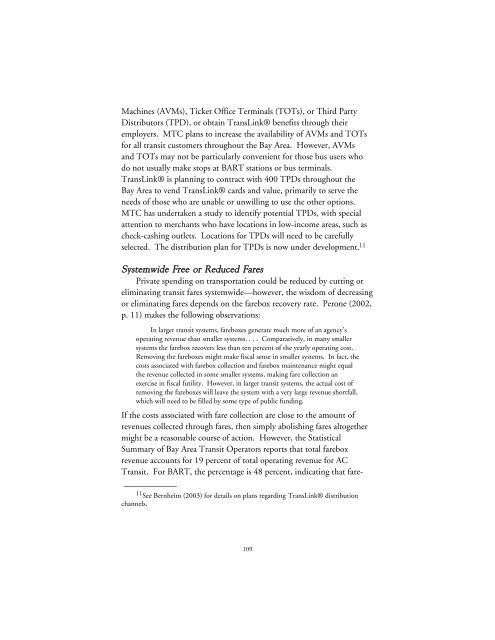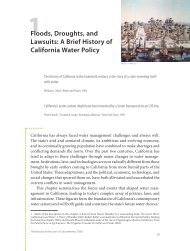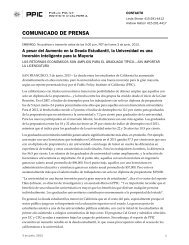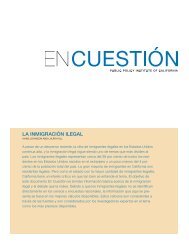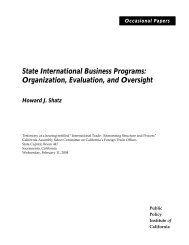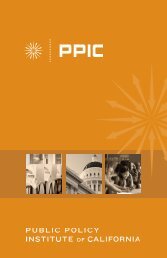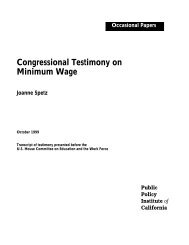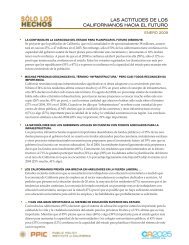Transportation Spending by Low-Income California Households ...
Transportation Spending by Low-Income California Households ...
Transportation Spending by Low-Income California Households ...
You also want an ePaper? Increase the reach of your titles
YUMPU automatically turns print PDFs into web optimized ePapers that Google loves.
Machines (AVMs), Ticket Office Terminals (TOTs), or Third Party<br />
Distributors (TPD), or obtain TransLink® benefits through their<br />
employers. MTC plans to increase the availability of AVMs and TOTs<br />
for all transit customers throughout the Bay Area. However, AVMs<br />
and TOTs may not be particularly convenient for those bus users who<br />
do not usually make stops at BART stations or bus terminals.<br />
TransLink® is planning to contract with 400 TPDs throughout the<br />
Bay Area to vend TransLink® cards and value, primarily to serve the<br />
needs of those who are unable or unwilling to use the other options.<br />
MTC has undertaken a study to identify potential TPDs, with special<br />
attention to merchants who have locations in low-income areas, such as<br />
check-cashing outlets. Locations for TPDs will need to be carefully<br />
selected. The distribution plan for TPDs is now under development. 11<br />
Systemwide Free or Reduced Fares<br />
Private spending on transportation could be reduced <strong>by</strong> cutting or<br />
eliminating transit fares systemwide—however, the wisdom of decreasing<br />
or eliminating fares depends on the farebox recovery rate. Perone (2002,<br />
p. 11) makes the following observations:<br />
In larger transit systems, fareboxes generate much more of an agency’s<br />
operating revenue than smaller systems. . . . Comparatively, in many smaller<br />
systems the farebox recovers less than ten percent of the yearly operating cost.<br />
Removing the fareboxes might make fiscal sense in smaller systems. In fact, the<br />
costs associated with farebox collection and farebox maintenance might equal<br />
the revenue collected in some smaller systems, making fare collection an<br />
exercise in fiscal futility. However, in larger transit systems, the actual cost of<br />
removing the fareboxes will leave the system with a very large revenue shortfall,<br />
which will need to be filled <strong>by</strong> some type of public funding.<br />
If the costs associated with fare collection are close to the amount of<br />
revenues collected through fares, then simply abolishing fares altogether<br />
might be a reasonable course of action. However, the Statistical<br />
Summary of Bay Area Transit Operators reports that total farebox<br />
revenue accounts for 19 percent of total operating revenue for AC<br />
Transit. For BART, the percentage is 48 percent, indicating that fare-<br />
_____________<br />
11 See Bernheim (2003) for details on plans regarding TransLink® distribution<br />
channels.<br />
109


